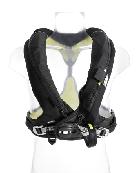Crew Briefings
Briefing
When a new crew come aboard, you must spend time covering the basics of safety with everyone, remember you may be the casualty, every year yacht skippers are killed in relatively simple situations that a basic safety briefing could have avoided.
If the skipper is the only one aboard who can operate the radio, start the engine or switch on the vessel's lights and the skipper is person who has fallen over the side, or is severely injured there is not much chance of a good outcome.
The aim of the skipper should be to a pass on their skills and knowledge to the crew. If you are just taking some friends out for the afternoon, a full briefing may not be appropriate, but think about the minimum that may be required.
The briefing should include but not be limited to:
- Lifejackets (put one on), explain when they should be used
- Harness (put one on), explain when they should be used.
- Harness attachment and movement on deck
- Flares (get them out), explain their operation
- Liferaft, show how to launch it
- VHF and mayday (place procedure card by radio), make sure at least one person can operate the VHF radio.
- Bilge pumps (minimum of two) and where the holes are in the hull, bung stowage
- First aid kit
- Bolt croppers (to cut rigging if dismasted) and torch stowage
- Engine start procedure
- Life buoys, lights, drogues, dan buoys and man over board procedure
- Gas safety and fire extinguishers
- Winch, boom and mainsheet traveller safety
Establish rules for the wearing of lifejackets and harnesses, these may include;
Harnesses; (to stop you leaving the boat)
If they feel they want to (why not all the time?)
At night
In reduced visibility (fog, heavy rain or snow)
In rough weather (depends on the crew and boat what is rough). Many experienced instructors make their novice crews wear a harness all the time.
Non swimmers
Children
Anyone being sea sick (most of them only want to die anyway at that point)
If short handed (3 is short handed, there would only be 2 left if one person fell over the side)
If anything happens to affect the handling of the vessel (rudder failure, engine failure-can you guarantee to sail back to a casualty?)
Show new people the jackstays (the tapes or ropes running the length of the deck, to which we attach the harnesses), any 'D' rings in the cockpit area for the crew to clip their harnesses to and discuss the other places it is safe to clip on to.
• The mast
• Standing rigging (wires to support the mast, not in extreme weather )
• The pushpit and pulpit
• Not the guard rails or running rigging (ropes which move)
Lifejackets; (to stay afloat if you are in the water-a harness is better-do not leave the vessel in the first place)
If they want to (why not all the time?)

Every time you use the dinghy (there are more fatalities rowing ashore in "safe" harbours than at sea in yachts)
In reduced visibility (you may be involved in a collision)
If anything happens to affect the integrity of the boat
Non-swimmers
Children
If you enter the water for any reason (cut ropes off the prop etc)
Summary
Ideally a safety briefing should take no more that 30 minutes, any longer than that and you have lost the attention of the crew. It normally works best it it is broken up in to different parts with a break between. It should also be done is a way that shows you are serious but not with the intention of scaring people off.
I must have done thousands of briefings on courses and cruises, but I still work from a printed form to make sure I do not forget anything. It is a good idea to write a safety brief that is specific to your boat then laminate it and keep it to hand.
Sailtrain.co.uk is free to use, but if you feel you would like to contribute to the running and development costs you can donate via Paypal:
Additional Resources:

